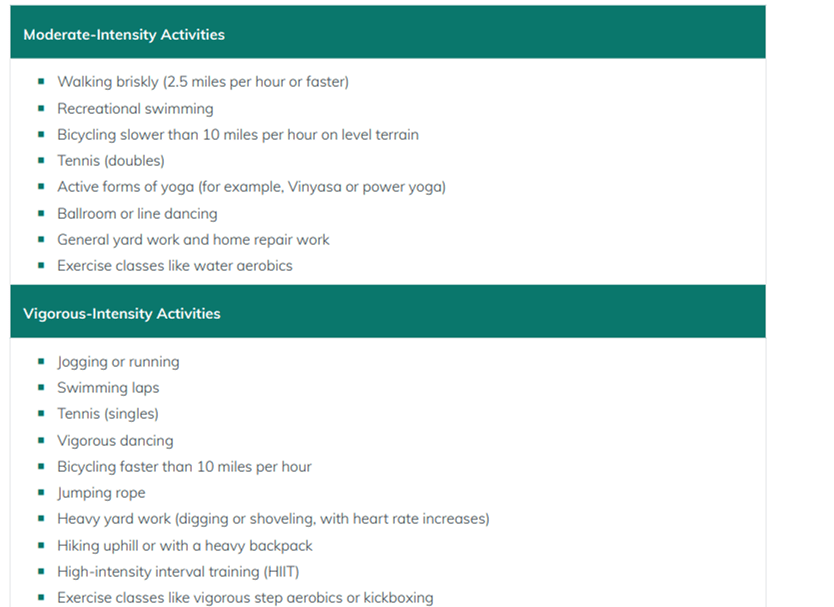About 27% of college students reported being diagnosed with depression, according to the spring 2023 American College Health Association National College Health Assessment survey (1).
A recent study looked at how depression could be impacted by leisure time physical activity as the semester progresses (2).
Who was studied? (2)
488 1st and 2nd year college students
What was the studied?
- Depression was measured using the patient health questionnaire 9, a validated instrument to measure depression (3).
- Leisure time physical activity was measured using the Godin-Shephard Leisure Time Physical Activity Questionnaire (4)
- The key question asked was: “During a typical 7-day period (a week), how many times on average do you do the following kinds of exercise for more than 15 min during your free time?” and then they respond to PA intensity related statements:
- Vigorous-intensity LTPA (heart beats rapidly), such as running, soccer, vigorous swimming;
- Moderate-intensity LTPA (not exhausting), such as tennis, easy swimming, folk dancing; and
- Light-intensity LTPA (minimal effort), such as badminton, walking, yoga, bowling.
What were the results?
- The study found that increasing light-intensity LTPA could decrease the elevation in depressive symptoms over time, regardless of initial level, when also accounting for covariances.
- Surprisingly, vigorous and moderate intensity LTPA did not alter the depression slope as the semester progressed.
What are some caveats?
- This is 1 small study.
- Further research is needed.
- Study population was College students at a university in China, which may not generalize to students in other countries.
- Results relied on self report and may not match objective measures of activity.
Other resources:
- Your attitude towards leisure activities can impact mental health benefits of leisure activities. Read more here: https://u.osu.edu/emotionalfitness/2021/09/29/attitude-towards-leisure-and-impact-on-mental-health/
- Check out these other leisure activities that can benefit mental health. https://u.osu.edu/emotionalfitness/category/leisure/page/2/
- Check out RECESS event on October 10th for other leisure activities that could benefit mental health.
https://ccs.osu.edu/outreach-and-education/outreach/campus-events/recess
Enter your email above to be notified of future posts.
By R. Ryan S Patel DO, FAPA OSU-CCS Psychiatrist
Disclaimer: This article is intended to be informative only. It is advised that you check with your own physician/mental health provider before implementing any changes. With this article, the author is not rendering medical advice, nor diagnosing, prescribing, or treating any condition, or injury; and therefore claims no responsibility to any person or entity for any liability, loss, or injury caused directly or indirectly as a result of the use, application, or interpretation of the material presented.
References:
- American College Health Association. American College Health Association-National College Health Assessment III: Reference Group Executive Summary Spring 2023. Silver Spring, MD: American College Health Association; 2023.
- BoShen , Gaoyuan Cui & Jin Bo (2023) How does change in leisure-time physical activity influence the growth trajectory of depressive symptoms in college students?, Journal of American College Health, DOI: 1080/07448481.2023.2252503
- Kroenke K, Spitzer RL, Williams JBW. The PHQ-9: validity of a brief depression severity measure. J Gen Intern Med. 2001;16(9):606–613. doi:10.1046/j.1525-1497.2001.016009606.x.
- Godin G, Shephard RJ. Godin leisure-time exercise questionnaire. Med Sci Sports Exerc. 1997;29:36–38.
